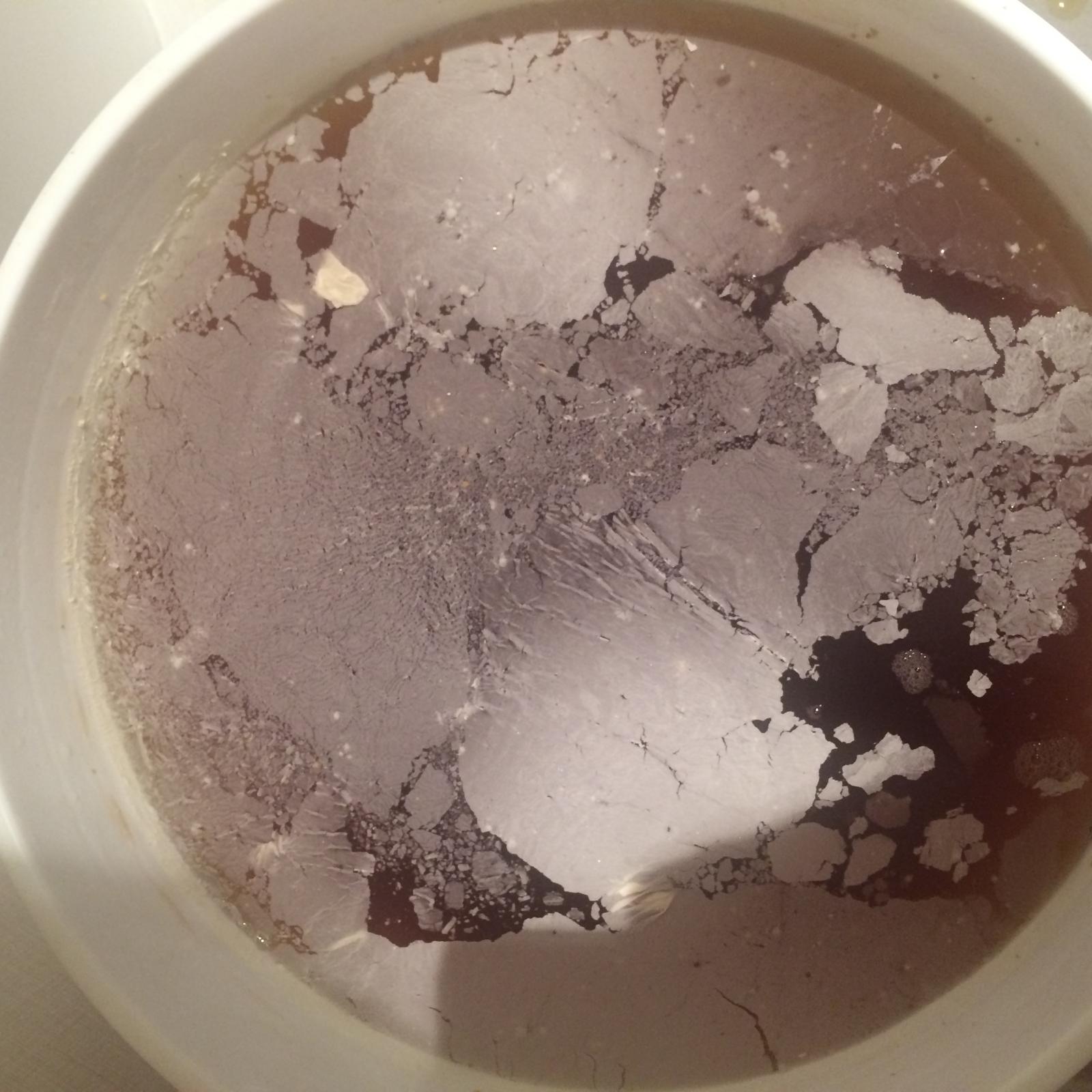You are using an out of date browser. It may not display this or other websites correctly.
You should upgrade or use an alternative browser.
You should upgrade or use an alternative browser.
White Crusty layer on IPA After Dry Hopping
- Thread starter kyle_g
- Start date

Help Support Homebrew Talk - Beer, Wine, Mead, & Cider Brewing Discussion Forum:
This site may earn a commission from merchant affiliate
links, including eBay, Amazon, and others.
Lacto infection.
And, "yes"...
And, "yes"...
oh and you'll want to replace that bucket for future "clean" beers, save it for your sour beer program or for holding grain. My advice if you have kegs and it tastes ok: cold crash and carb it up, then drink it while it still tastes fine. Don't bottle it since you would risk bottle bombs as the bacteria continues to convert. If you do keg it, make sure you replace those gaskets afterwards.
beergolf
Well-Known Member
It is some sort of infection. The amateur micro biologists here like to claim it is a lacto infection., but all you know is that is an infection. Many infections can start out looking like that. I have had brett look like before. The only way to identify it is using a microscope. Other than that it is just a WAG (wild *ss guess) You cannot identupify an infection by the look of the pellicle.
Secondly, hops inhibit lacto growth and since it is an IPA I highly doubt that it is lacto.
Only taste will tell. If it tastes good then you are good. If you want to bottle it you will have to be willing to let it go a long time before bottling, because the bugs (whatever they are) can slowly keep working and take the gravity down very low. Bottle too soon and you risk bottle bombs.
Secondly, hops inhibit lacto growth and since it is an IPA I highly doubt that it is lacto.
Only taste will tell. If it tastes good then you are good. If you want to bottle it you will have to be willing to let it go a long time before bottling, because the bugs (whatever they are) can slowly keep working and take the gravity down very low. Bottle too soon and you risk bottle bombs.
Yeah, whatever. All grain breweries are loaded with lactobacillus, it doesn't take much of an eff-up to start a fermentation with a load of lacto on board, and that pellicle looks like any classic lacto infection (not like brett at work), hops or no hops...
Cheers!
Cheers!

Next time, if you are going to do a secondary, don't do it in a bucket! The transfer makes the beer more vulnerable to oxygen and microbes, and then the wide headspace of a bucket means even more headspace to be vulnerable. If you want to use a secondary, make sure it's an appropriately sized carboy. Otherwise, you can dryhop in the fermenter.
I've done a dozen secondaries into buckets. Guess I just lost this one.
if i were you, i wouldn't just write off yooper's advice. she's one of the ones to actually listen to on this site.
that said, I did see a suggestion once that if you absolutely have to do secondary in a bucket to add a little more fermentables in when you rack off. i tried it only once and did have success with that, but i will not be trying it in the future. i just got desperate and had to do it in order to accomplish what i wanted to do, when i wanted to do it. i wouldn't want to press my luck on future brews though.
but yes it looks infected.
Similar threads
- Replies
- 6
- Views
- 374
- Replies
- 5
- Views
- 479
- Replies
- 10
- Views
- 883


